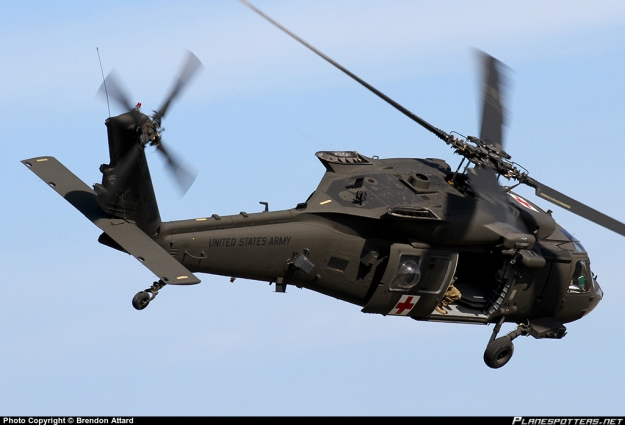Unlocking Peak Performance: UH 60 Helicopter Maintenance Guide
Unlocking Peak Performance: UH 60 Helicopter Maintenance Guide
Blog Article
Understanding the Mechanics and Engineering Behind Uh 60 Helicopters
The UH-60 helicopter, commonly referred to as the Black Hawk, stands as a peak of modern rotorcraft innovation, personifying a mix of robust engineering and complex technicians. From its inception to its present models, the advancement of this aircraft showcases a combination of advancement and usefulness. As we peel back the layers of the UH-60's design, a world of complex systems and thorough design comes to light. Understanding the auto mechanics and design behind this functional airplane unveils a realm where precision meets power, and where each element plays a vital duty in attaining flight.
Background of UH-60 Helicopters
The background of UH-60 helicopters traces back to the late 1970s when the USA Military looked for a advanced and functional utility helicopter to change its aging fleet. In feedback to this need, the Sikorsky Aircraft Corporation created the UH-60 Black Hawk helicopter. Presented in 1979, the UH-60 promptly became a staple in army procedures because of its impressive capacities.
The UH-60 was created to master a variety of goals, including troop transportation, medical discharge, digital warfare, and unique operations. Its capacity to adjust to various functions made it a valuable property to the U.S. uh 60. Military and other army forces all over the world
For many years, the UH-60 platform has actually gone through numerous upgrades and variations to boost its performance and equal evolving objective needs. These helicopters have seen extensive solution in conflicts such as the Gulf Battle, Afghanistan, and Iraq, showcasing their reliability and adaptability in varied operational settings. The UH-60's rich background is a testament to its long-lasting legacy as a leading energy helicopter.

Engine and Power Equipments
Making use of sophisticated propulsion technology, UH-60 helicopters are equipped with innovative engine and power systems to make certain optimum efficiency and dependability in a series of operational scenarios. The UH-60, commonly called the Black Hawk, is powered by 2 General Electric T700-GE-701D engines, each efficient in providing up to 1,940 shaft horsepower. These turboshaft engines give the needed thrust for the helicopter to accomplish its goals successfully, including army transportation, medical evacuation, and fight assistance.

Blades System and The Rules Of Aerodynamics
Just how do the blades system and the rules of aerodynamics of UH-60 helicopters add to their functional performance and trip abilities? The rotor system of the UH-60 helicopter plays a vital role in providing lift and propulsion. The UH-60 features a four-bladed, totally expressed blades system that enables high ability to move and stability during flight. This layout makes it possible for the helicopter to execute a variety of objectives, from transport and medical discharge to battle procedures.
The rules of aerodynamics likewise play an essential role in the performance of UH-60 helicopters. The structured fuselage and rotor blade layout lower drag, enabling the helicopter to achieve greater rates and much better fuel performance. The wind resistant design of the UH-60 also adds to its capacity Read Full Report to run in varied environmental problems, consisting of high elevations and warm temperatures.
Avionics and Flight Control Systems

In its intricate coordination with the rotor system and the rules of aerodynamics of UH-60 helicopters, the avionics and trip control systems form a vital network of technologies shaping the aircraft's functional capacities. In the UH-60, these systems include digital screens, interaction radios, General practitioner navigating, weather radar, and autopilot systems.
The flight control systems of the UH-60 are accountable for converting the pilot's inputs check right into the appropriate modifications to the blades system, making certain stable flight and maneuverability. These systems consist of hydraulic actuators, servos, and computers that collaborate to manage the major and tail blades, along with various other trip control surface areas. By specifically managing the helicopter's flight dynamics, these systems enable pilots to carry out a variety of objectives, from transport and search-and-rescue to fight operations, with precision and confidence.
Function and Applications in Air Travel
Avionics systems in UH-60 helicopters include a range of digital systems that aid in navigating, communication, surveillance, and managing numerous aircraft features. These systems consist of digital display screens, autopilot systems, interaction radios, GPS navigating equipment, and weather condition radar. Additionally, these systems include security attributes such as autopilot settings, surface understanding advising systems, and stability augmentation systems to boost the overall security and functional capabilities of the UH-60 helicopters in different goals, including army transportation, medical emptying, search and rescue, and airborne firefighting.
Conclusion
In verdict, the UH-60 helicopter is a versatile aircraft with a rich background and progressed design. Its engine and power systems, rotor system, aerodynamics, avionics, and trip control systems all collaborate to make it a effective and trustworthy maker. The UH-60's function and applications in air travel are huge, ranging from military operations to search and rescue goals. Its continued development and use show its significance in the field of air travel (uh 60).
In its detailed sychronisation with the blades system and aerodynamics of UH-60 helicopters, the avionics and trip control systems create an important network of modern technologies forming the aircraft's operational capabilities.The trip my review here control systems of the UH-60 are accountable for equating the pilot's inputs into the proper changes to the rotor system, making sure steady flight and maneuverability. Avionics systems in UH-60 helicopters encompass a range of electronic systems that aid in navigation, communication, monitoring, and managing different airplane features. Additionally, these systems integrate safety and security functions such as auto-pilot modes, surface recognition alerting systems, and security enhancement systems to boost the general security and functional capacities of the UH-60 helicopters in various missions, consisting of army transport, medical emptying, search and rescue, and airborne firefighting.
Its engine and power systems, blades system, aerodynamics, avionics, and trip control systems all work together to make it a reliable and trusted equipment.
Report this page